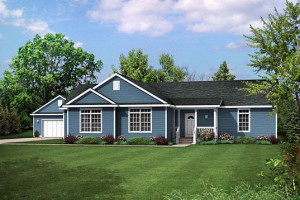Process of Installing an Insulated Precast Foundation for a Modular Home
 Insulated precast foundation walls simplify basement construction, save time and money. The walls comprise high-strength concrete panels manufactured off site. Each panel contains solid concrete studs for load-bearing support and a built-in concrete footing. Some panels include rigid insulation to keep the basement warmer and rebar and polypropylene fibers for strength. Walls can be customized by project to allow for door and window openings, steel-beam pockets and brick ledges.
Insulated precast foundation walls simplify basement construction, save time and money. The walls comprise high-strength concrete panels manufactured off site. Each panel contains solid concrete studs for load-bearing support and a built-in concrete footing. Some panels include rigid insulation to keep the basement warmer and rebar and polypropylene fibers for strength. Walls can be customized by project to allow for door and window openings, steel-beam pockets and brick ledges.
Manufacturers offer other convenience features such as built-in access for wiring and plumbing and wood or steel nailers for easy drywall installation. Panels range in size from 2 to 12 feet wide by 8 to 12 feet high to accommodate a variety of basement configurations.
The cost of insulated precast foundation systems is competitive with the cost of other foundation walls. A precast concrete foundation is best-used to construct a full basement with consistent sill height; different wall heights slow the process, minimizing the cost benefit. Installers who aren’t familiar with precast concrete panel assembly will need additional training. Some manufacturers allow only certified installers to deliver and erect their systems.
Steps on How the Insulated Precast Foundation is Installed
Constructing a basement using precast foundation walls includes preparing the gravel base, placing and connecting the panels, installing a capillary break, installing the flooring and backfilling.
After the site is excavated and perimeter drainpipe is laid, a bed of clean, compacted gravel is prepared over the drainpipe. The gravel facilitates sub-slab drainage—water drains down the panels, through the gravel bed and into the perimeter drain system. The gravel also transfers the load from the foundation wall to the surrounding soil. The gravel layer will be 4 to 12 inches thick, as determined by a soils engineer, to meet the foundation’s load-bearing needs.
Next, a crane is used to place the first concrete panel. It’s braced, and a second panel is placed to form a corner. The joint is sealed with a urethane sealant, and the panels are bolted together. Additional panels are placed in the same fashion, usually without needing any bracing. All corner joints are mitered, and all other joints butt together. Once all panels are placed, sealed and bolted, any code-required waterproofing is applied.
Next, a 4- to 6-inch layer of gravel is spread over the slab footprint. A 10-mil vapor barrier is installed on top of the gravel layer, covering the entire footprint of the foundation. Together, these form a capillary break between moisture in the soil and the underside of the basement slab.
Finally, the basement slab is poured and floor joists are installed above the insulated precast foundation. Both of these provide bracing for the foundation walls before backfilling begins—the concrete slab anchors the bottom, and the floor framing locks the top. The foundation is then backfilled and can be considered complete.
In case you still have question about modular homes and insulated precast foundation, you may contact Legendary Homes Inc in Jackson, Michigan. A representative will be happy to assist you. Meanwhile you can check our modular home price sheets by signing up to our blog


